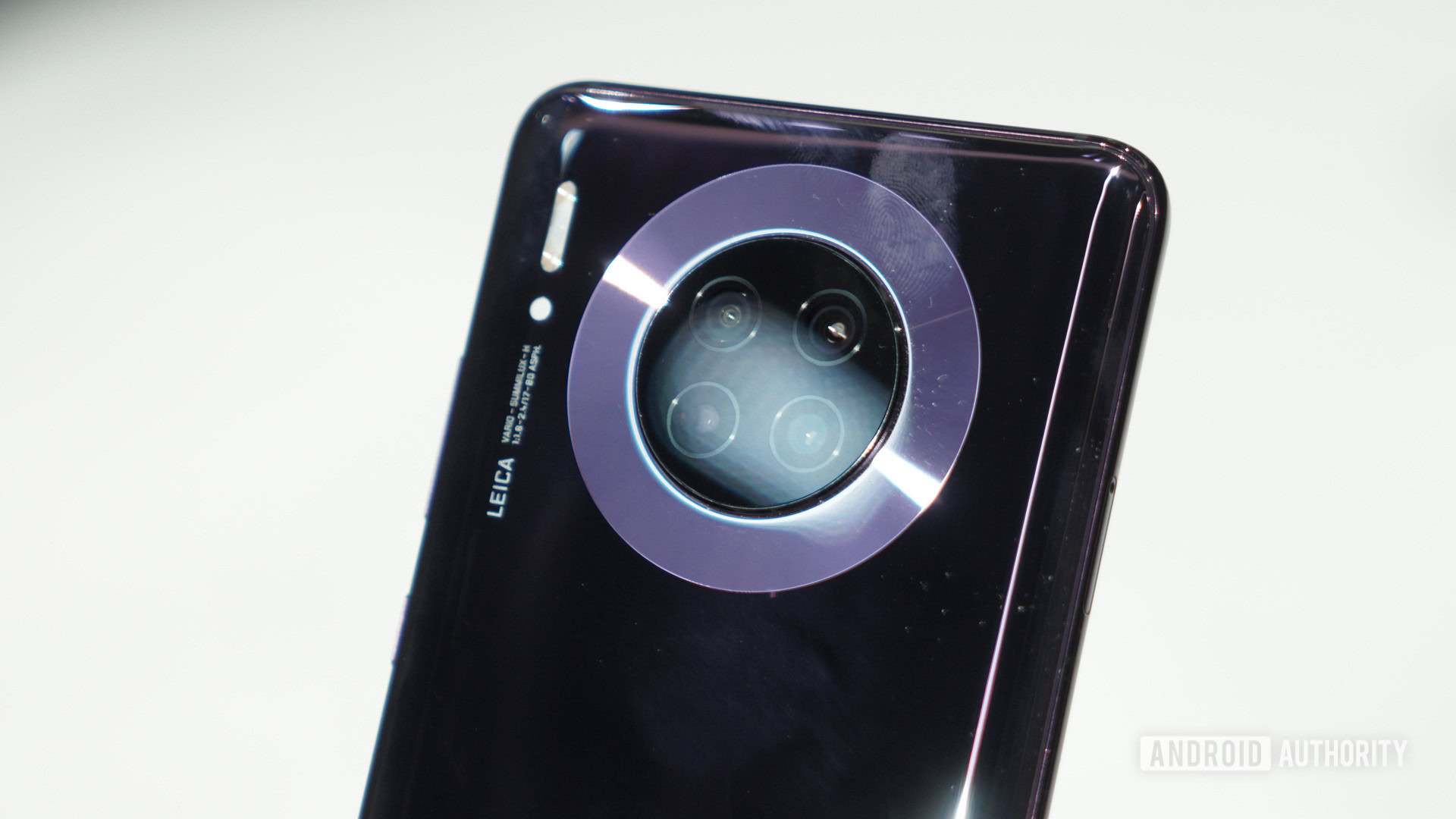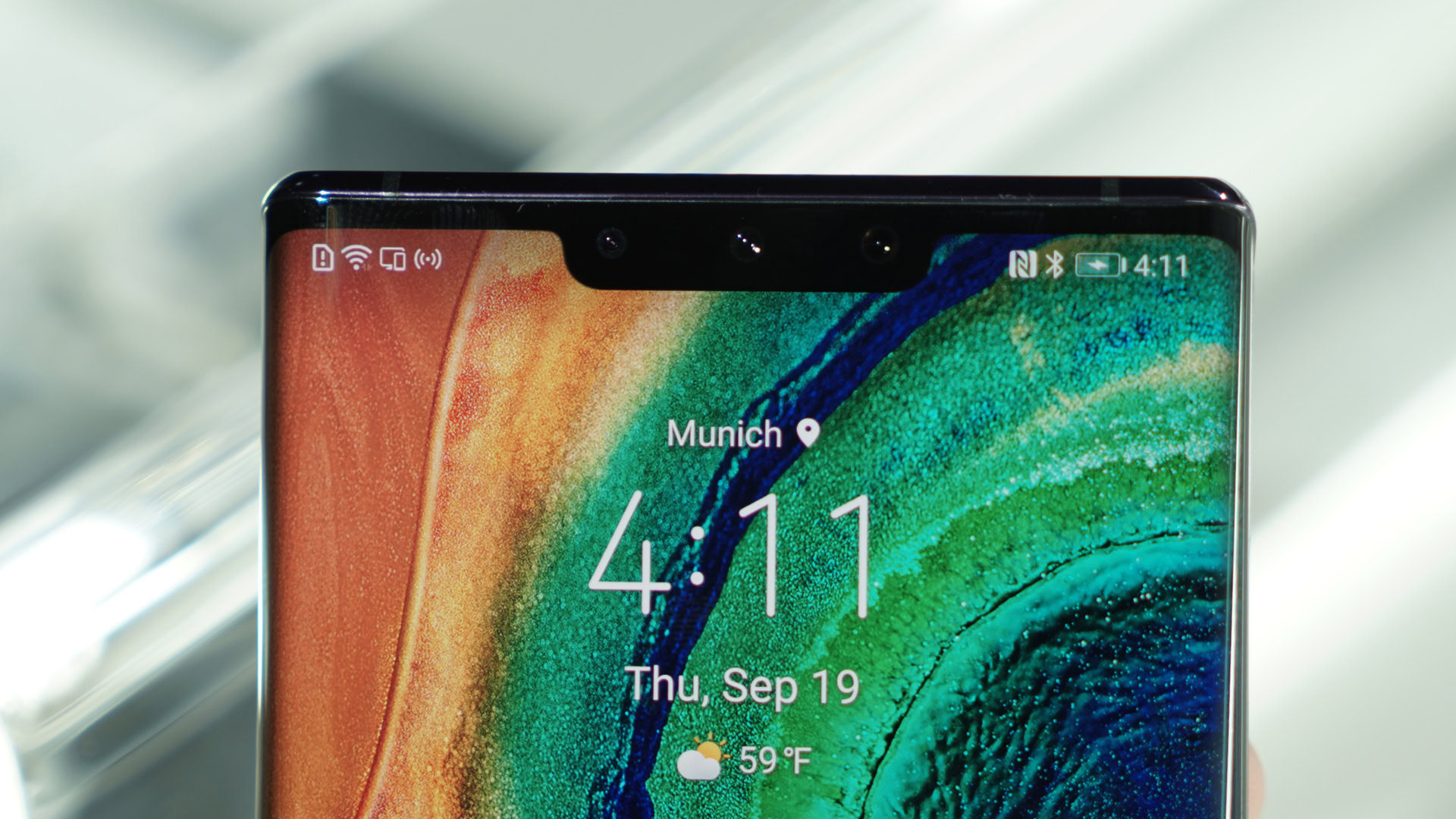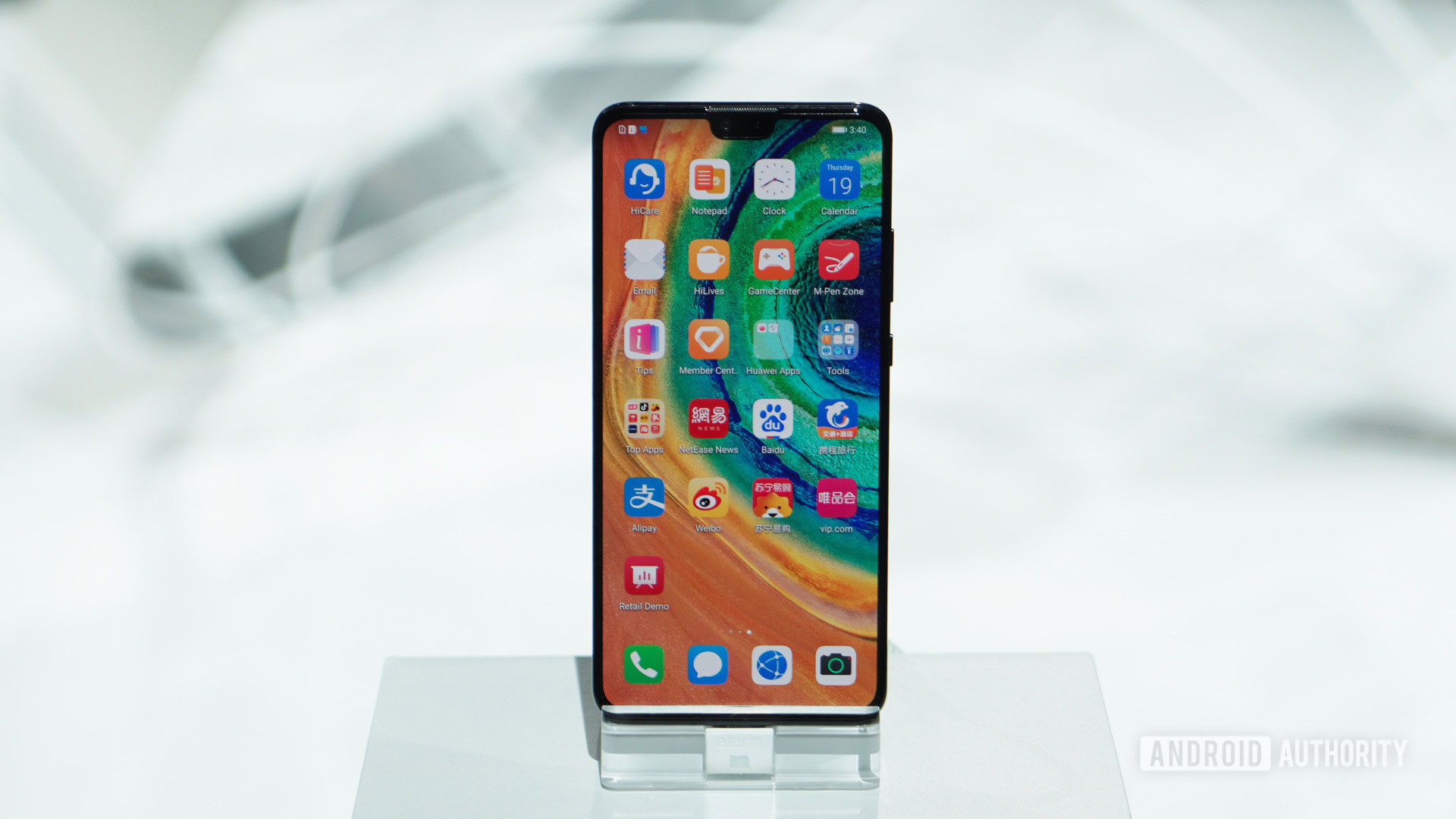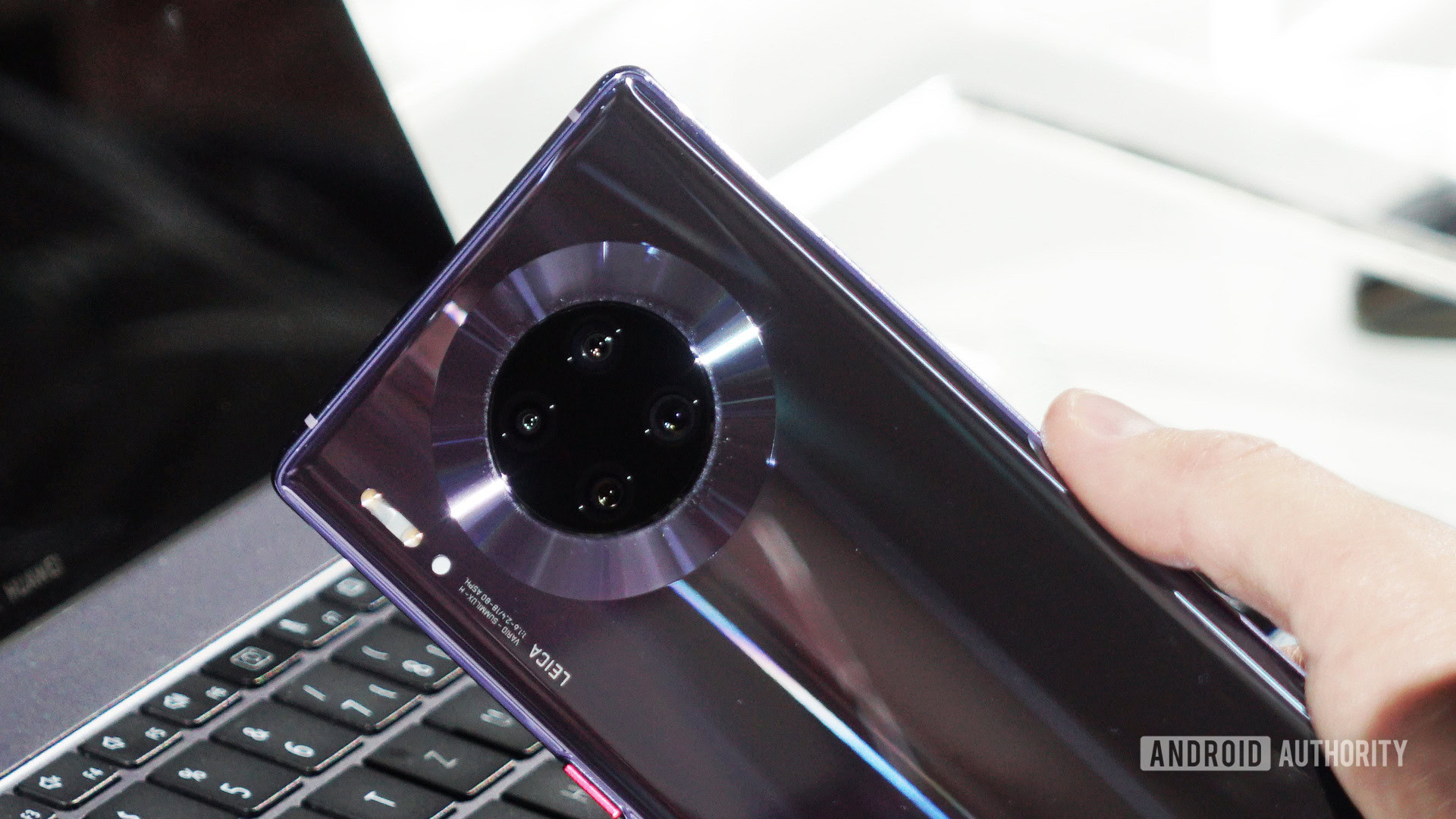Affiliate links on Android Authority may earn us a commission. Learn more.
The Mate 30 Pro and HUAWEI's big pain in the apps

Richard Yu, CEO of HUAWEI’s consumer business group, struggled to contain his frustration while being questioned about apps by reporters at the Mate 30 series launch today in Munich. Peppered with inquiries regarding Google Play Services, the Google Play Store, and how HUAWEI will cope without them was surely trying for the executive — particularly one who insists the situation is not of its own making.
“You have to understand,” said Yu, ” that we didn’t want to do this. We were forced to do this. The US government forced us. We have no other choice.”
But consumers do, and whether or not they’ll choose to buy new HUAWEI phones sans Android is the question everyone wants answered.
The entity entropy

The US Department of Commerce added HUAWEI to the Entity List earlier this year. Boiled down to its most simple terms, it means US companies cannot do business with HUAWEI. They cannot sell it hardware or software. This includes, among other things, processors and Android itself. HUAWEI cannot put the full version of Google Android on its new phones. It is still allowed to support Android on devices already in the market, however.
Today’s launch of the Mate 30 and Mate 30 Pro demonstrated the full impact of the ban. HUAWEI’s new phones aren’t able to run Google Mobile Services, nor Google Play Services. That means no Google apps, such as Gmail and YouTube, and no Google Play Store. That’s right, the 2.7 million apps in the Play Store are inaccessible to the HUAWEI Mate 30 Pro — a $1.099 smartphone.
The devices still run Android, but for many, Android isn't Android without Google.
“The problem is that Google apps use the GMS core and we don’t have access to the GMS core,” noted Yu. “Apps in the HUAWEI App Gallery run on the HMS core which doesn’t support apps like Gmail and YouTube.”
The devices still run Android, and in fact have Android 10 aboard. This is possible due to the open source nature of Android. But for many, Android isn’t Android without Google.
Yu knows exactly how damaging this is, but painted an overly-rosy picture anyway.
See also: HUAWEI Mate 30 Pro hands-on.
HUAWEI can’t help

The HUAWEI App Gallery, which is the app store that will be installed on the Mate 30 and Mate 30 Pro, includes some 45,000 apps. That’s a far, far cry from 2.7 million. In the App Gallery, owners of Mate phones will find alternatives for email, browsing, messaging, and so on.
“Google apps and services are not included on the phone, but [Huawei] insisted that developers can simply write to HUAWEI’s own programming layer above what appears to be the open source version of Android,” explained Avi Greengart, lead analyst at Techsponential. “This is the way HUAWEI and all OEMs operate inside China, which is how HUAWEI can boast of having 45,000 apps already available for its App Gallery.”
HUAWEI hopes to bulk up the app offering with a $1 billion incentive fund.
HUAWEI is essentially offering a bounty to developers in the hopes that they’ll make versions of their apps that are compatible with the HMS core. Apps based on the HMS core will integrate with HUAWEI’s Android-based EMUI skin.
This strategy is likely to fail. Microsoft and Research In Motion tried this with Windows Phone and BlackBerry OS 10, respectively, and where are they now?
We cannot help people to side-load the Google Play Store.Richard Yu, CEO HUAWEI
What about a workaround for consumers? Perhaps in-store sales reps could instruct people on how to get the Play Store onto their Mate 30 or Mate 30 Po.
“We cannot help people to side-load the Google Play Store,” Yu said, “but consumers can do that themselves.” Yu noted that side-loading the Play Store — which he didn’t admit could actually be done — might be “a little bit inconvenient for some users.” I’ll say.
Those who want or must have access to services such as Gmail have one option: Use the web sites. Google has crafted HTML5-rich web sites for some of its core services, meaning Mate 30 and Mate 30 Pro owners can find them via the browser. This is, indeed, a little bit inconvenient.
Of HUAWEI’s fledgling HarmonyOS, Yu would only say “not until next year.”
See also: HUAWEI Mate 30 and Mate 30 Pro specs, price, and release date.
HUAWEI Mate 30 Pro: A sleeper hit?

Despite these challenges, Yu insists the Mate 30 series will sell well. He predicted the device could move as many as 20 million units between China and Europe.
“This is the most competitive 5G phone in the world,” said Yu. “The China market will show strong demand for these phones. Consumers really love our products.”
Techsponential’s Greengart agrees about HUAWEI’s chances in China. Further, this strategy could play out down the road.
“It is worth noting a couple of differences this time around,” noted Greengart about the app incentive program. “$1 billion is an order of magnitude more than Microsoft spent on developer incentives, and even if this makes no difference outside of China, it will undoubtedly help to shore up HUAWEI’s leading position inside its home market, which is absolutely crucial now that its export markets are inaccessible.”
Selling its flagship device outside China without access to Google services, however, is “almost pointless.” Moreover, Greengart strongly suggests “it would be irresponsible for any European operator to offer the Mate 30 without access to the Play Store and regular software updates from Google because of security liabilities.”
“Clearly [Huawei] still hopes to sell these in Europe, though I can’t … recommend that consumers buy them.”
In other words, HUAWEI’s non-China sales are going to plummet over the short term. “Over the long term, if HUAWEI can build an app ecosystem of its own, it solidifies its position inside China and may even be able to export again.”
Huawei's non-China sales are going to fall off a cliff over the short term.Avi Greengart, Techsponential
But that’s not up to HUAWEI, not for the moment. The company will need to find itself in the good graces of the US government and have its name scratched off the Entity List before it can really move forward with any meaningful strategy outside of China.
The Mate 30 series is undoubtably an attractive offering and Chinese consumers are sure to snap it up when it goes on sale next month. The company is bound to take a hit in Europe and elsewhere, but perhaps this ordeal will lead to a stronger, more competitive HUAWEI down the road.
At the moment, however, this Android and app problem is an unmitigated disaster for everyone. HUAWEI loses. HUAWEI’s partners lose. Consumers lose.